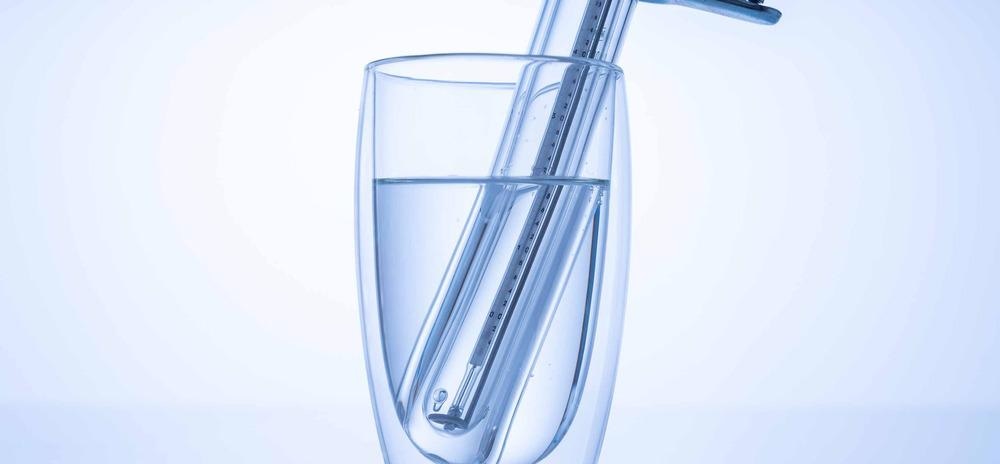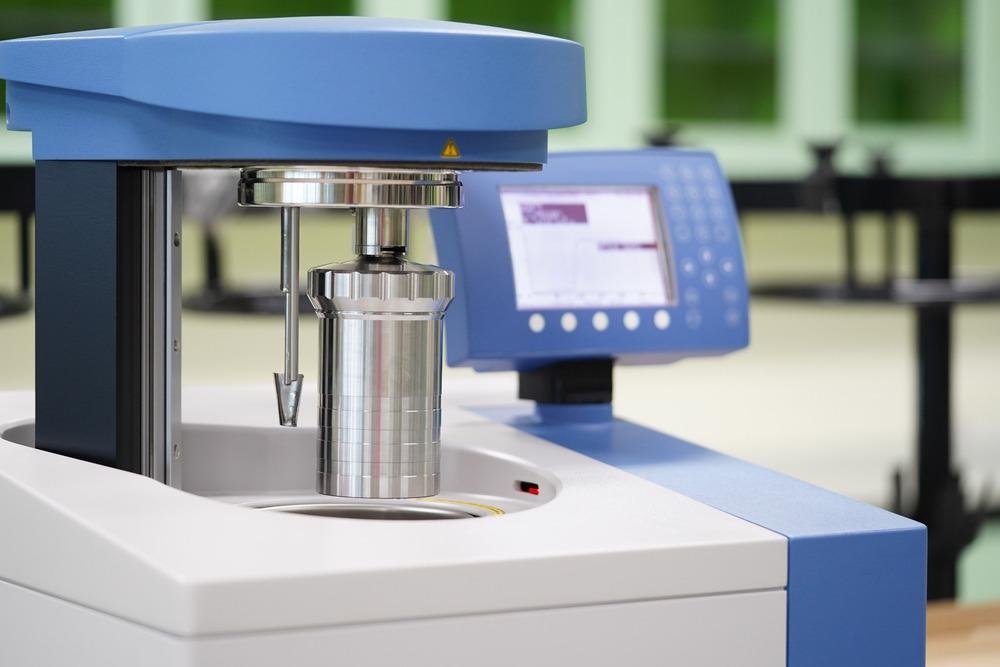Calorimeters are used to find measurements of absorbed doses, but they are often bulky and fragile. The Aerrow MK7 is a relatively small calorimeter that can be used directly in water or water-equivalent mediums.

Image Credit: luchschenF/Shutterstock.com
What are Graphite Calorimeters?
Calorimetry is a dosimetry method that allows users to obtain measurements on the absorbed dose. Typically, a calorimeter functions by measuring an increase in temperature that arises due to the absorbed energy of the radiation.
This rise in temperature is then compared to that of a calibrated heat source in order to produce a final measurement.
The widespread use of calorimeters is often attributed to the ability to use traceable standards like electricity and temperature, both of which are entirely independent of radiation. By utilizing these primary standards, the user can avoid reliance on dosimetric quantities that are often less certain than current electrical and temperature-based standards.
One type of device that is used to provide calorimetric readings is a graphite calorimeter. Typically, a graphite calorimeter is comprised of three distinct components, of which include its core, jacket, and shield. The most sensitive component of the graphite calorimeter is its core, which is where radiation-induced temperature increases are measured.
In order to obtain a precise reading, the mass of the object must be known so that the reported energy value of the average dose that is absorbed can be determined. Typically, the core of a graphite calorimeter can range in size from 6 to 30 millimeters (mm).

Image Credit: Choksawatdikorn/Shutterstock.com
Aerrow MK7: A Novel Tiny Graphite Calorimeter
Most of the radiation calorimeters that are currently in use today are both bulky and fragile. Furthermore, these devices can only be operated by highly skilled individuals who have been trained on the equipment and have the necessary background knowledge on radiation physics.
Several transportable calorimeters have been developed, such as the IMRT calorimeters, which rely on a vacuum pump to achieve pressures that are less than 10-3 Pascals (Pa).
While this system is effective at thermally isolating various components of the calorimeter, it requires an extensive amount of time to establish a partial vacuum. Furthermore, the ability to maintain this partial vacuum within porous graphite also causes this system to be expensive and thus not practical for regular clinical use.
In an effort to overcome these challenges and design a graphite-based calorimetry system that could specifically be used in the clinic, the Aerrow MK7 was developed. The Aerrow MK7 is a relatively small calorimeter that can be used directly in water or water-equivalent mediums.
As compared to other graphite calorimeters, the Aerrow also consists of an aerogel-based material and several air gaps, rather than a vacuum, that ensures thermal isolation of the graphite from the surrounding environment. An additional advantage of the aerogel is that it provides structural support that maintains the position of the internal components.
Notably, the Aerrow can operate in two different modes that include the isothermal and quasi-adiabatic modes. In the quasi-adiabatic mode and following exposure to radiation, the volume of the Aerrow experiences a temperature rise. This rise in temperature is then used to calculate the absorbed radiation dose as it relates to the specific heat capacity of the graphite core.
Utility of Aerrow MK7 in the Clinic
In a hospital or clinical setting where therapeutic radiation is administered, numerous quality assurance (QA) procedures are carried out on a regular basis. Clinical reference dosimetry, for example, is often assessed during QA procedures on a daily and monthly basis in order to ensure that the machine is operating properly.
Several specialized and nonconformal radiation delivery modalities such as MR-linacs, the Gammakniofe®, and Cyberknife®, to name a few, are not capable of producing a standard reference field.
As a result, there has been an increased demand for methodologies to be developed that can adapt current reference dosimetry traceability to these smaller fields. The Aerrow MK7 is therefore ideal for these clinical applications, as it remains highly accurate when obtaining dosimetry measurements of small fields in radiotherapy clinics.
References and Further Reading
LNHB. (n/a). Graphite and water calorimeters [Online]. Available from: http://www.lnhb.fr/presentation-en/graphite-and-water-calorimeters/.
Science Direct. (n/a). Calorimetry [Online]. Available from: https://www.sciencedirect.com/topics/chemical-engineering/calorimetry.
Cote, B., Keszti, F., Bancheri, J., et al. (2021). Feasibility of operating a millimeter-scale graphite calorimeter for absolute dosimetry of small-field photon beams in the clinic. Medical Physics. doi:10.1002/mp.15244.
Renaud, J., Sarfehnia, A., Bancheri, J., & Seuntjens, J. (2017). Aerrow: A probe-format graphite calorimeter for absolute dosimetry of high-energy photon beams in the clinical environment. Medical Physics 45(1); 414-428. doi:10.1002/mp.12669.
Disclaimer: The views expressed here are those of the author expressed in their private capacity and do not necessarily represent the views of AZoM.com Limited T/A AZoNetwork the owner and operator of this website. This disclaimer forms part of the Terms and conditions of use of this website.